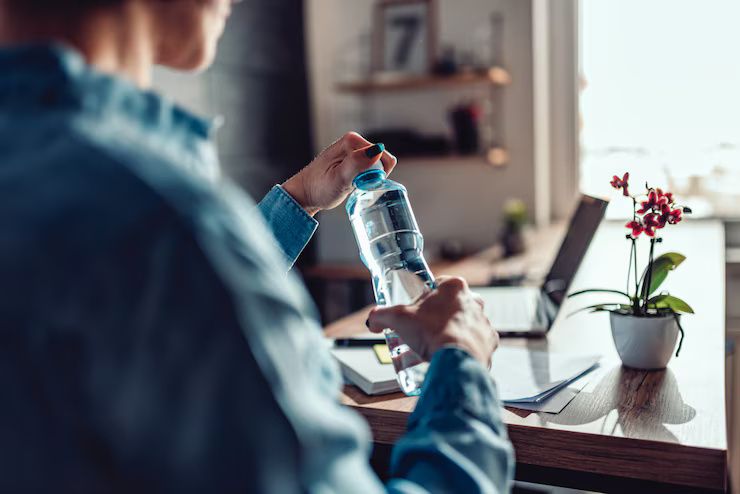Water purification is the process of removing contaminants, pathogens, and undesirable chemicals from water to make it safe for human consumption or industrial use. The goal is to improve water quality and prevent waterborne diseases, especially in areas with limited access to clean sources.
This process exists because natural water sources—such as rivers, lakes, or groundwater—can carry pollutants like bacteria, viruses, heavy metals, and industrial runoff. Purification ensures that the water people drink, cook with, or use in healthcare and manufacturing is safe and compliant with health standards.

Why Water Purification Matters Today
Access to safe drinking water is a fundamental human right, yet millions of people worldwide still rely on contaminated sources. Water purification addresses critical challenges such as:
-
Preventing disease outbreaks (e.g., cholera, typhoid)
-
Improving public health by reducing waterborne infections
-
Enhancing the safety of food preparation
-
Supporting industries like pharmaceuticals, agriculture, and food processing
-
Sustaining the environment through wastewater treatment and recycling
It matters not just in rural areas or developing countries but also in urban centers, especially during natural disasters, floods, or infrastructure failures.
Recent Developments in Water Purification (2024–2025)
Recent years have seen several advancements in water purification technologies:
-
Graphene-based filters: These ultra-thin membranes can remove microscopic pollutants and are being tested in countries like India and the U.S.
-
Solar-powered filtration units: Useful for off-grid or rural areas, solar units are gaining traction in disaster relief and sustainable development efforts.
-
Smart purifiers: IoT-enabled devices now monitor water quality in real-time, notify users about filter changes, and track consumption patterns.
-
Decentralized purification systems: Smaller, modular treatment plants are being deployed in remote or underserved regions to reduce dependency on centralized infrastructure.
The global water purifier market is expected to surpass USD 65 billion by 2030, driven by urbanization, awareness of health risks, and regulatory pressure.
Laws, Standards, and Government Initiatives
Water purification practices are governed by national and international standards to ensure public health. Examples include:
International Guidelines:
-
WHO Drinking Water Guidelines – Set global benchmarks for microbial and chemical safety
-
UN Sustainable Development Goal 6 (Clean Water and Sanitation) – Calls for universal access by 2030
India:
-
BIS 10500:2012 – Sets permissible limits for drinking water quality
-
Jal Jeevan Mission (JJM) – Launched by the Government of India to provide functional tap water connections and ensure purification at the source
-
Pollution Control Board (CPCB) – Monitors industrial wastewater treatment standards
USA:
-
EPA Safe Drinking Water Act (SDWA) – Mandates national drinking water regulations
-
NSF/ANSI Standards – Ensure household purification systems meet safety and performance benchmarks
Policy enforcement ensures industries treat effluents properly, urban homes get safe tap water, and purification technologies are certified before use.
Tools and Resources for Safe Water Purification
Individuals, communities, and institutions can use several tools and platforms to support purification and monitoring:
Devices and Technologies:
-
RO (Reverse Osmosis) systems – Common for household use
-
UV water purifiers – Effective against bacteria and viruses
-
Carbon filters – Remove chlorine, odor, and sediments
-
Ceramic and bio-sand filters – Low-cost options for rural households
Apps & Websites:
-
Water Quality Monitoring App (India - JJM dashboard)
-
Safe Water for All (UNICEF) – Education tools for NGOs and health workers
-
EPA’s Drinking Water Watch – U.S. public access to water test results
-
Aquatest.net – Resources for portable water testing tools
-
NSF.org – Certification search for verified purification systems
Calculators:
-
Water footprint calculator – Understand household water use
-
Filter replacement calculators – Based on usage and model
Frequently Asked Questions
Q1. What is the most effective water purification method?
Reverse osmosis (RO) is one of the most effective methods, especially when combined with UV and carbon filters. It removes bacteria, viruses, and chemical contaminants.
Q2. Is boiling water enough for purification?
Boiling kills most pathogens but does not remove heavy metals, chemicals, or sediments. It’s effective in emergencies but not a long-term solution.
Q3. How can I test my water quality at home?
You can use a TDS (Total Dissolved Solids) meter or purchase home testing kits for bacteria, nitrates, and pH. Government and municipal websites also provide water quality data.
Q4. What contaminants are commonly found in tap water?
Common contaminants include chlorine, fluoride, heavy metals (like lead or arsenic), bacteria, and viruses, depending on the region and source.
Q5. How often should I replace my water purifier filters?
Most filters should be changed every 6–12 months depending on usage and water quality. Smart purifiers often have sensors to notify you automatically.
Final Thoughts
Water purification is more than just a home appliance—it’s a global public health necessity. From rural areas relying on simple sand filters to urban households using smart purifiers, the demand for clean water is universal. Technological progress, combined with supportive policies and public awareness, is key to ensuring safe water access for everyone.
Whether you're a homeowner, policy planner, or someone researching clean water solutions, understanding the importance and tools of water purification is vital in a changing world.
